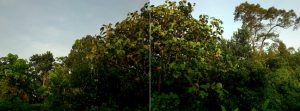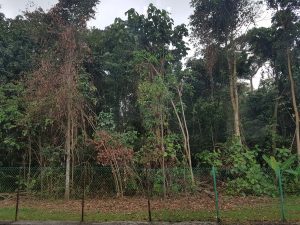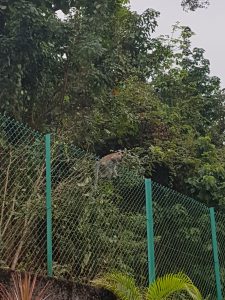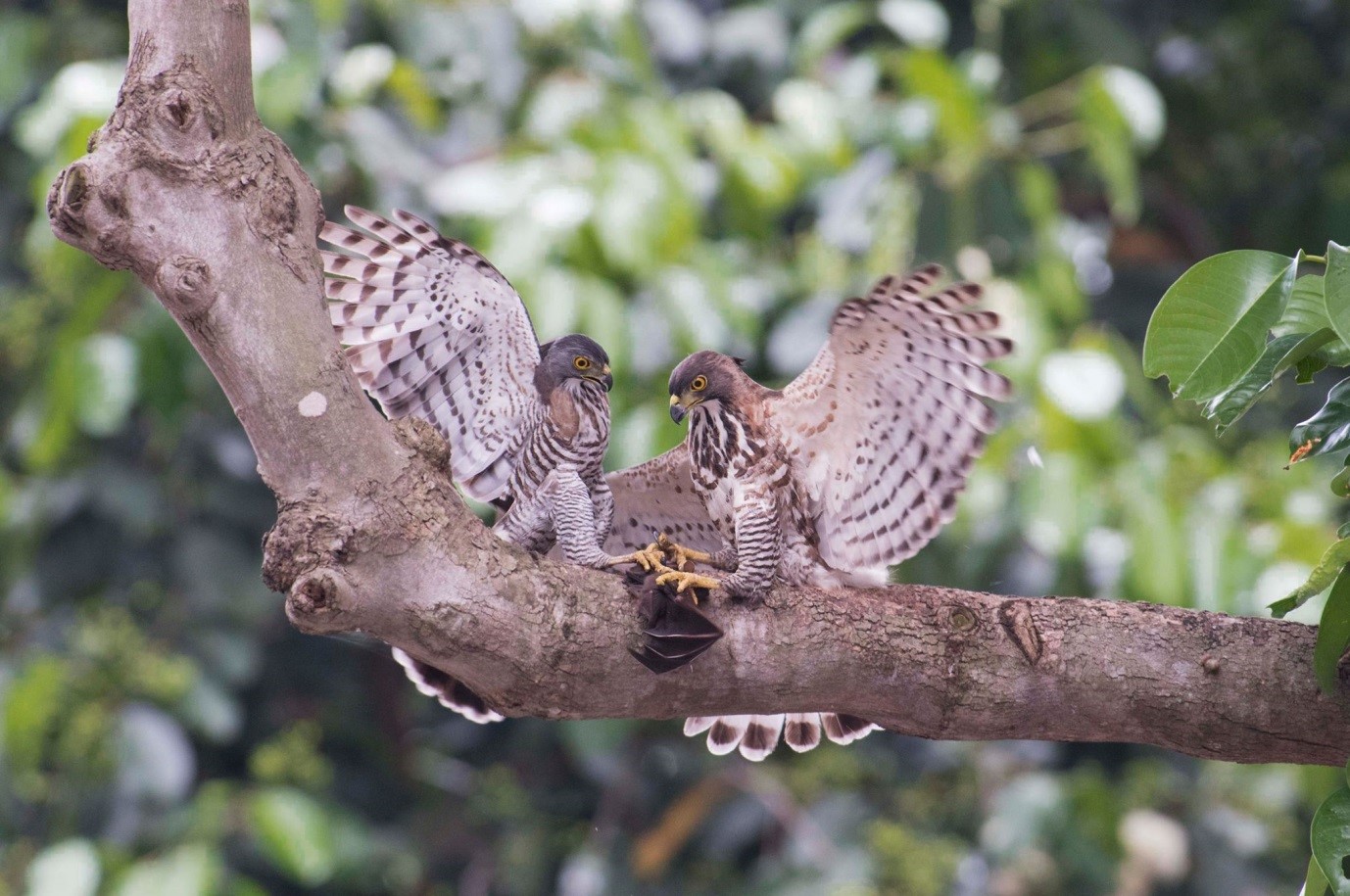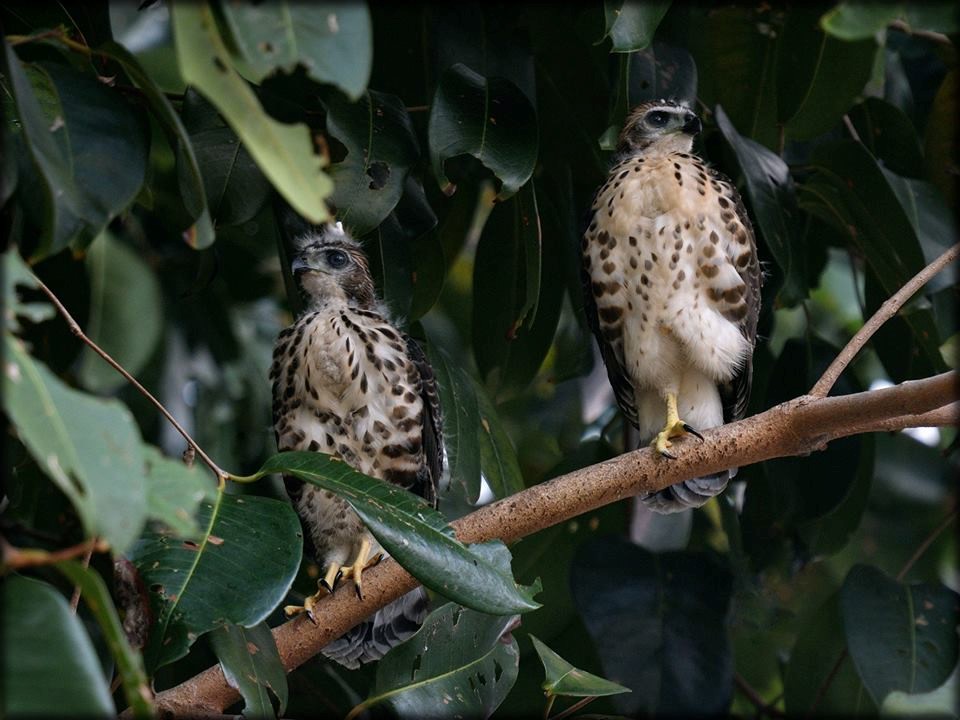During my exchange in Hong Kong 6 months back, I came across a peculiar sight when I visited the Hong Kong Island region. There were trees on the walls! Tall, massive ones attached to the retaining stone walls! Though I was curious back then, I did not ponder it for too long, as I was distracted by the other delights that Hong Kong could offer. However, when these trees were brought up during the Urban Ecology lecture on urban vegetation, my curiosity was aroused once more. So, join me as I uncover more about this fascinating phenomenon!
First and foremost, what is a stonewall tree?
“A stonewall tree is a tree that grows on a stone retaining wall with most of its roots spreading on or penetrating through the wall face, and with the trunk base situated within the confines of a wall1.”
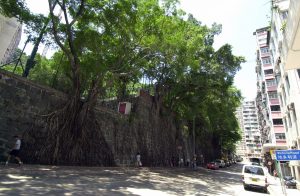 Here is an example of a row of stonewall trees in Hong Kong!
Here is an example of a row of stonewall trees in Hong Kong!
(Image from: http://geog.hku.hk/UrbanEcologyResearchGroup/img/community/06/01.jpg)
The origins of the stone walls
Hong Kong’s unique topography and the lack of developable land meant that urban expansion could only be made possible by land reclamation and terracing the steep hillslopes2. Vertical cutting of the slopes was mostly carried out to obtain usable flat surfaces for urban development, and masonry retaining walls were erected to prevent slope failure2. Hong Kong has about 1 700 masonry retaining walls, mostly in the western and central parts2. The distribution of masonry retaining walls (in red) in western and central parts of Hong Kong
The distribution of masonry retaining walls (in red) in western and central parts of Hong Kong
(Image from: https://html1-f.scribdassets.com/1m6l13v1z444jga7/images/5-d9d114fa4a.jpg)
How do trees adapt?
The trees that live on these walls belong to the genus Ficus,i.e., fig trees2. The most common one is the Chinese Banyan (F. microcarpa)2.
The figs that dominate the walls have adaptations to strangling behaviour. In their natural tropical rainforest habitat, their life cycle begins when frugivorous bats and birds deposit droppings containing seeds onto upper branches of other trees, and some germinate3. The seedling starts off as an epiphyte that needs the host tree for a substrate2. Over time, if it has enough resources, the strangler fig will divert its energy to propagating and elongating its aerial roots toward the forest floor2. Eventually, it develops an extensive root system in the soil2. Now that they’ve got a reliable and enhanced root system, the trees can grow quickly and become massive2. Eventually, the aerial roots around the trunk of the host tree thicken and lignify, exerting a strong force, while the host tree exerts an opposite one. The two opposing forces create so much pressure that they literally strangle the host (that’s how they get their name!), depriving it of water and nutrients, to the point that it dies. A quintessential parasite.
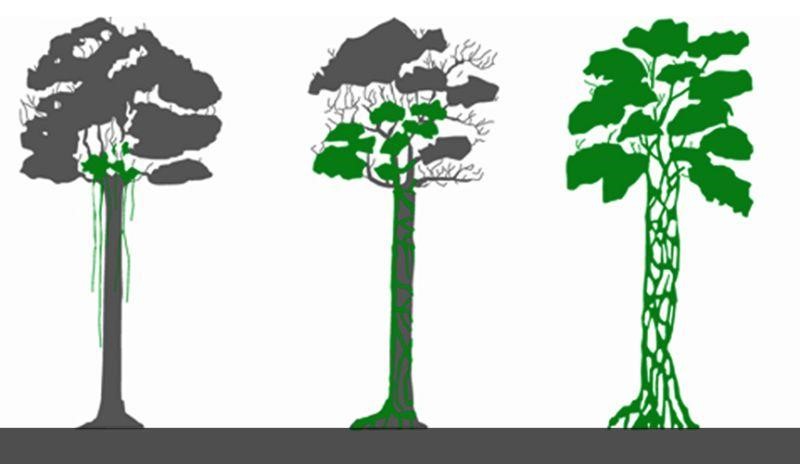 Illustration of how a stranger fig takes over its host plant
Illustration of how a stranger fig takes over its host plant
(Image from: https://umtrees.files.wordpress.com/2015/10/strangler.jpg)
 A strangler fig in its natural tropical rainforest habitat in Hong Kong!
A strangler fig in its natural tropical rainforest habitat in Hong Kong!
Back to the stone walls. Basically, the strangler figs substitute the wall for a host tree2. Seeds are deposited in or on the wall2. Of the small fraction that manages to germinate under harsh urban conditions and develop into epiphytes, the natural strangler habit helps their roots penetrate the gaps and joints to reach the soil in the wall core or behind the wall2. This soil allows roots to proliferate, increasing nutrient intake and anchoring the tree2. The lignified aerial roots also interact with the tree’s own branches and trunk to form sturdy and tightly bound networks of root stands and props to support the massive structure2. All in all, strangler figs are pre-adapted to flourish on stone walls.
So why are these trees important?
Hong Kong’s wall trees are considered precious and unique natural assets, exemplifying the harmonious co-existence of culture and nature in an urban environment5. They are also historically important. Some were established in the early 19th century on some of the oldest stone walls4. With traditional masonry wall construction no longer in practice, current threats to demolish and modify these walls further increase the unique historical value of these trees5. Furthermore, local communities have an attachment to these trees, which they grew up with5, and benefit from the ecosystem services they provide2. Clearly, these trees enhance the urban landscape quality and enrich biodiversity in Hong Kong2.
 Check out the designs of these masonry walls!
Check out the designs of these masonry walls!
(Image from: http://www.toothpicnations.co.uk/blog/wp-content/uploads/2016/05/IMG_7559-compressed-1024×768.jpg)
A case study of failure
Some of these trees fail, often when they are uprooted during severe weather events2.
For example, in July, 2015, a banyan tree on Bonham street was uprooted and crashed down onto the street, damaging surrounding infrastructure and injuring 2 people7. The video below shows the process of it happening.
險象環生!【般咸道冧大樹 扯冧護土牆壓男女】http://bit.ly/1IjDE5q【冧樹一刻曝光 7秒內瞓低】http://bit.ly/1Lsrwjo【同區塌樹殺人 壓死孕婦最轟動】http://bit.ly/1TPmgHU【塌樹列入古樹名木冊】http://bit.ly/1LssUm0【大樹塌向對面樓 掃甩冷氣機無損結構】http://bit.ly/1Lsrw2O【只差少少壓車頭 司機:咁我就玩完!】http://bit.ly/1HIhbf7===========================跟實我哋 【 現場 - 蘋果突發】就會知更多社會事#黃雨之災 #冧樹 #記者講兩句
Posted by 現場 - 蘋果突發 on Tuesday, July 21, 2015
(Source: Facebook)
 The scene after the tree failure along Bonham street
The scene after the tree failure along Bonham street
(Image from: https://www.hongkongfp.com/wp-content/uploads/2015/07/bkn-20150722121902990-0722_00822_001_03p.jpg)
The Controversy
This incident prompted the Highway Department (HyD) to inspect and manage the conditions of other five trees on this street8. Initially, HyD decided to remove one tree in poor condition and prune the other four8. But just two weeks later, HyD officials decided to remove all the remaining banyan trees, and by the next morning, all four century-old trees were gone9. The official statement released by the HyD stated that they found signs of the walls weakening, which posed a risk of imminent tree collapse and a threat to public safety8. This decision ignored recommendations from experts6, including from Civil Engineering and Development Department, which found no evidence of instability 10.
 The remaining stumps of the 4 Chinese Banyans
The remaining stumps of the 4 Chinese Banyans
(Image from: http://www.bauhinia.org/index.php/english/analyses/361)
The not-so-happily-ever-after ending?
(Source: Youtube)
In the aftermath of this event, the local community mourned the loss of the banyans, expressing their feelings by posting notes and attaching balloons to the roots or stumps or whatever was left of the trees.
Key takeaways and Call to Action
- The decision and handling of this incident by the Government lack transparency. Proper explanations should be given. If there were any potential risk to public safety due to the walls or the trees, then the Government should have conducted and publicised a tree and wall evaluation report to justify their actions.
- The Government should engage the public and experts for consultation. Even though a panel of experts was consulted, the relevant authorities ignored findings that the remaining four trees pose no danger6. The public was not consulted despite its affinity for the trees.
- The Government should formulate a comprehensive conservation guideline or plan to protect and conserve the wall trees in Hong Kong, and give experts a greater say.
- Public education is key in raising awareness and appreciation of the natural and historical significance of the trees. The public should be thoroughly briefed on who to contact when they spot an issue with the trees.
- Increased monitoring should be used to ensure that walls are sturdy enough to support the trees, and trees should be maintained so that their weight is not excessive.
Final thoughts
While scouring for more information on stonewall trees, I stumbled on and became embroiled in the controversy of Hong Kong government’s actions involving the stonewall trees. It became clear to me that there is a government-public disconnect, in that the authorities did not consult the local community. But the government argued that it was acting in the interests of public safety, and not in the interests of public preferences6. A question to ask is: are we wrong to criticise the government’s mentality that prevention is better than cure, even at the expense of conservation? If so, then what is the best course of action?
For more information about stonewall trees, do check out this infographic!
(https://www.scmp.com/sites/default/files/2015/07/31/back-graphic.png)
References
1Jim, C.Y. (1998). Old stone walls as an ecological habitat for urban trees in Hong Kong. Landscape and Urban Planning 42(1): 29-43.
2Jim, C.Y (2012). Study on Stonewall Trees: Maintenance Approach for the Six Stonewall Trees on Slope no. 11SW-A/R577, Bonham Road. Highways Department Government of the HKSAR. Retrieved from http://www.districtcouncils.gov.hk/central/doc/2012_2015/tc/dc_meetings_doc/9351/
20150827_File1_ReportText_WallTreeSurveyText_20130108R2.pdf.
3Jim, C. Y. (2014). Ecology and conservation of strangler figs in urban wall habitats. Urban Ecosystems, 17(2), 405-426.
4Lo, A. Y., & Jim, C. Y. (2015). Community attachment and resident attitude toward old masonry walls and associated trees in urban Hong Kong. Cities, 42, 130-141.
5Greening, Landscape and Tree Management Section Development Bureau. (2013). Management Guidelines for Stonewall Trees. Retrieved from https://www.greening.gov.hk/filemanager/content/pdf/tree_care/Guilelines_for_stone_wall_trees
_e.pdf.
6Time Out Hong Kong. (2016). Should Hong Kong’s century-old stonewall trees be removed?. Retrieved from http://timeout-admin-node1.candrholdings.com/big-smog/features/75801/should-hong-kongs-century-old-stonewall-trees-be-removed.html#panel-2.
7Kilpatrick, R. (2015). Video: The moment Hong Kong’s biggest ‘wall tree’ came crashing down. Hong Kong Free Press. Retrieved from https://www.hongkongfp.com/2015/07/22/two-injured-as-hong-kongs-tallest-stone-wall-tree-comes-crashing-down/.
8Wong, V. (2015). Bonham Road Banyan trees removed after cracks in stone wall appear. Hong Kong Free Press. Retrieved from https://www.hongkongfp.com/2015/08/08/bonham-road-banyan-trees-removed-after-cracks-in-stone-wall-appear/.
9Chan, B. (2015). It’s a saw point: why Hong Kong’s urban trees need managing better. South China Morning Post. Retrieved from http://www.scmp.com/lifestyle/article/1877002/its-saw-point-why-hong-kongs-urban-trees-need-managing-better
10Bauhinia Foundation Research Centre. (2015). Cutting down of stonewall trees causes controversy on tree management policy. Retrieved from http://www.bauhinia.org/index.php/english/analyses/361.

